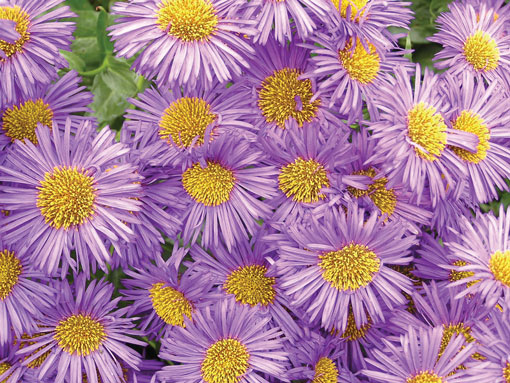Just when we see most of our garden blooms fading with cooler fall weather, low and behold, native wildflowers put on their spectacular display. Whether planted in flower beds or self-seeded along rural fence lines, vacant lots and drainage ditches, it’s hard not to notice this breathtaking display of fall beauty.
The value of this gorgeous scene cannot be overestimated. Bees and butterflies enjoy some of the last sources of pollen and nectar. Birds depend upon the seeds left on native plants throughout the winter. Roots of natives hold the soil along embankments and sides of ditches during rains.
SO, WHAT’S BLOOMING ALONG YOUR ROADSIDE?
ASTERS

There are over 100 different varieties of asters growing in the United States. Along my roadside and in wildflower areas throughout central Hancock County, I notice New England asters, New York asters and White woods aster.
• New England asters can grow as tall as five to six feet in height. Want shorter plants? Top them around July 4 — or let them grow to their full potential and support them with garden stakes or branches woven among the thick stems. They do best in full sun, and after becoming well established, they don’t require much moisture. Flowers and leaves have been used for medicinal purposes in China, and they also can be used fresh or dried in salads.
• New York asters are shorter than their “cousins.” Their growth habit is more compact. Still doing best in full sun, they will grow in partial shade but have fewer flowers.
• White woods asters are not woody. Their name comes from the areas in which they grow best: dry, shady woodlands. Their flowers are not as numerous as the other asters, but they’re beautiful just the same — and so beneficial to pollinators and birds.
GOLDENROD

Giant goldenrod is beneficial to bees, butterflies, moths and birds. Reaching up to six feet in height, this beauty, with its strong, upright stems, proliferates in fields, along roadsides and in unmowed areas. Many people blame this plant for allergies when the real culprit is ragweed. To control reseeding, clip flowers after blooming.
AGERATUM

Also known as blue mist flower, this is an excellent plant for wildflower gardens. It will grow in sun or shade and tolerates poor soil. This plant may need watering during dry fall weather and produces loads of blue-lavender flowers in flat clusters.
LIATRIS

Also known as blazing star, liatris appears as lavender wands of small flowers in small, rounded bracts and grows up to five feet in height. Cultivate these in clusters for the most impact.
AUTUMN CLEMATIS

A vine with large, showy flowers, usually white, autumn clematis grows wild in trees and along fence lines. They are great nectar source for butterflies, bees and other pollinating insects. It is ideally grown over an arbor.
There are so many native plants that enhance our lives. Please allow them to flower and reseed our neighborhoods and roadsides.



